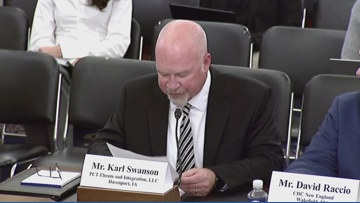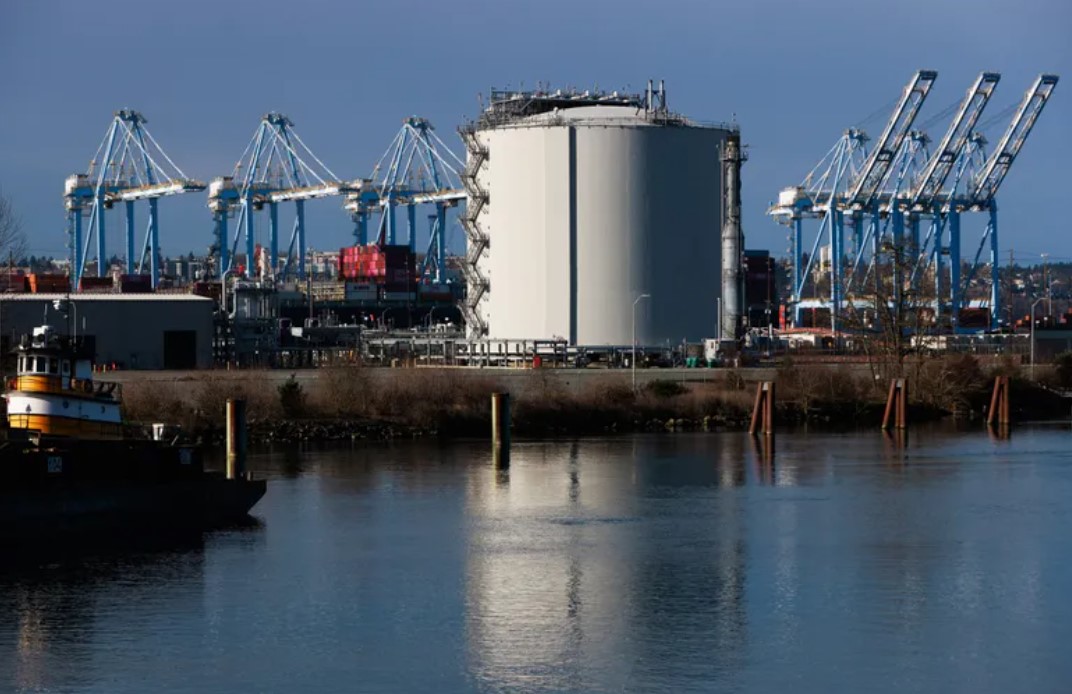Report on the Best Big College Towns in America with Emphasis on Sustainable Development Goals (SDGs)
Introduction
Each year, students across the United States face the challenging decision of selecting a college. Choices range from large universities to small private schools, and from locations close to home to those far away. A critical factor influencing this decision is the location of the school, especially for those seeking the ideal college town experience. This report highlights the top big college towns in America, emphasizing their alignment with the United Nations Sustainable Development Goals (SDGs), particularly in areas such as economic growth, quality education, sustainable cities, and reduced inequalities.
Impact of Colleges on Local Communities and SDGs
Colleges significantly influence their local economies and communities. They are often among the largest employers in their regions, supporting local businesses such as coffee houses and restaurants. However, challenges such as rising rent prices and funding cuts to research institutions can adversely affect these communities.
- SDG 8 (Decent Work and Economic Growth): Colleges provide employment and stimulate local economies.
- SDG 11 (Sustainable Cities and Communities): The presence of colleges shapes urban development and community life.
- SDG 4 (Quality Education): Institutions offer diverse educational opportunities.
- SDG 10 (Reduced Inequalities): Historically Black Colleges and Universities (HBCUs) contribute to educational equity.
Methodology
The ranking of the 50 best big college towns was derived from WalletHub’s 2025 Best College Towns in America report, which evaluated 415 cities using 31 metrics. These metrics were categorized into:
- Wallet Friendliness
- Social Environment
- Academic and Economic Opportunities
Only cities with at least 300,000 residents and a university or college student population of at least 7,500 were included.
Top Big College Towns in America
#50. Denver, Colorado
- Total Score: 49.16
- Wallet Friendliness Rank: 294
- Social Environment Rank: 31
- Academic and Economic Opportunities Rank: 267
Denver hosts multiple institutions including the University of Colorado Denver and Regis University. The city offers year-round outdoor activities and a robust public transit system, supporting SDG 11. Denver’s culinary scene, including the first-ever Chipotle near the University of Denver, reflects its vibrant student culture.
#49. Baltimore, Maryland
- Total Score: 49.22
- Wallet Friendliness Rank: 252
- Social Environment Rank: 143
- Academic and Economic Opportunities Rank: 214
Baltimore is home to Johns Hopkins University and several HBCUs, promoting SDG 4 and SDG 10. The city’s rich history and public markets enhance community engagement (SDG 11). Well-paying STEM job opportunities support SDG 8.
#48. Boston, Massachusetts
- Total Score: 49.38
- Wallet Friendliness Rank: 392
- Social Environment Rank: 19
- Academic and Economic Opportunities Rank: 157
Boston, the birthplace of higher education in the U.S., hosts over 300,000 students across 26 colleges. Institutions like Berklee College of Music contribute to cultural richness (SDG 11). The city’s educational prominence supports SDG 4.
#47. Milwaukee, Wisconsin
- Total Score: 49.44
- Wallet Friendliness Rank: 160
- Social Environment Rank: 125
- Academic and Economic Opportunities Rank: 298
Milwaukee is home to the University of Wisconsin-Milwaukee and Marquette University. The city’s festivals and brewery tours foster social cohesion (SDG 11), while educational institutions support SDG 4.
#46. Honolulu, Hawaii
- Total Score: 49.45
- Wallet Friendliness Rank: 354
- Social Environment Rank: 2
- Academic and Economic Opportunities Rank: 272
Honolulu offers urban island living with institutions like Hawaii Pacific University. Access to beaches and cultural festivals promotes well-being and community (SDG 3 and SDG 11).
#45. Chicago, Illinois
- Total Score: 49.62
- Wallet Friendliness Rank: 281
- Social Environment Rank: 70
- Academic and Economic Opportunities Rank: 228
Chicago hosts renowned universities such as the University of Chicago and Northwestern University. The city’s diverse culture and strong industry ties support SDG 8 and SDG 11.
#44. Indianapolis, Indiana
- Total Score: 49.64
- Wallet Friendliness Rank: 180
- Social Environment Rank: 117
- Academic and Economic Opportunities Rank: 284
Indianapolis includes several universities and offers cultural districts and a developing public transit system, aligning with SDG 11 and SDG 8.
#43. New Orleans, Louisiana
- Total Score: 49.72
- Wallet Friendliness Rank: 242
- Social Environment Rank: 71
- Academic and Economic Opportunities Rank: 262
Home to Tulane University and HBCUs, New Orleans fosters cultural heritage and education (SDG 4, SDG 10, SDG 11). The city’s economy benefits from tourism, energy, and healthcare sectors (SDG 8).
#42. Tulsa, Oklahoma
- Total Score: 49.97
- Wallet Friendliness Rank: 127
- Social Environment Rank: 138
- Academic and Economic Opportunities Rank: 294
Tulsa combines historical preservation with modern industry, offering opportunities in technology and aerospace (SDG 8). The city’s cultural districts enhance community life (SDG 11).
#41. Corpus Christi, Texas
- Total Score: 50.35
- Wallet Friendliness Rank: 92
- Social Environment Rank: 254
- Academic and Economic Opportunities Rank: 202
Corpus Christi offers coastal living with educational institutions like Texas A&M University-Corpus Christi. The city supports local economy and student life, contributing to SDG 8 and SDG 11.
Summary of Key Findings
- Many top college towns host multiple universities, including HBCUs, supporting inclusive and quality education (SDG 4, SDG 10).
- These cities often serve as economic hubs with diverse industries, promoting decent work and economic growth (SDG 8).
- Urban planning and cultural offerings in these towns enhance sustainable cities and communities (SDG 11).
- Environmental and recreational amenities in several cities contribute to good health and well-being (SDG 3).
Conclusion
The best big college towns in America provide not only educational excellence but also vibrant social environments, economic opportunities, and sustainable urban living. These factors align closely with the Sustainable Development Goals, fostering communities where students can thrive academically, socially, and economically.
1. Sustainable Development Goals (SDGs) Addressed or Connected
- SDG 4: Quality Education – The article discusses higher education institutions, student populations, and academic opportunities in various college towns.
- SDG 8: Decent Work and Economic Growth – The article highlights the economic impact of colleges on local economies, job opportunities for graduates, and the role of universities as major employers.
- SDG 11: Sustainable Cities and Communities – The article covers aspects of city accessibility, housing costs, social environments, and urban infrastructure in college towns.
- SDG 10: Reduced Inequalities – Mention of Historically Black Colleges and Universities (HBCUs) and their role in providing educational opportunities.
- SDG 3: Good Health and Well-being – Indirectly implied through references to social environments, crime rates, and recreational activities that contribute to well-being.
2. Specific Targets Under Those SDGs Identified
- SDG 4: Quality Education
- Target 4.3: Ensure equal access for all women and men to affordable and quality technical, vocational and tertiary education, including university.
- Target 4.4: Increase the number of youth and adults who have relevant skills, including technical and vocational skills, for employment.
- SDG 8: Decent Work and Economic Growth
- Target 8.3: Promote development-oriented policies that support productive activities, decent job creation, entrepreneurship, creativity and innovation.
- Target 8.5: Achieve full and productive employment and decent work for all women and men, including young people and persons with disabilities.
- SDG 11: Sustainable Cities and Communities
- Target 11.1: Ensure access for all to adequate, safe and affordable housing and basic services.
- Target 11.2: Provide access to safe, affordable, accessible and sustainable transport systems for all.
- Target 11.7: Provide universal access to safe, inclusive and accessible green and public spaces.
- SDG 10: Reduced Inequalities
- Target 10.2: Empower and promote the social, economic and political inclusion of all.
- SDG 3: Good Health and Well-being
- Target 3.4: Promote mental health and well-being.
3. Indicators Mentioned or Implied to Measure Progress
- SDG 4 Indicators
- Gross enrollment ratio in tertiary education (implied by student population sizes and number of institutions).
- Number of graduates with relevant skills for employment (implied by job opportunities in STEM and other fields).
- SDG 8 Indicators
- Employment rate of graduates (implied by references to job opportunities and economic contributions).
- Number of jobs created by educational institutions (implied by colleges being among largest employers).
- SDG 11 Indicators
- Housing affordability index (explicitly mentioned as “housing cost” and “rent is typically more expensive”).
- Public transport accessibility and coverage (mentioned as “robust public transit system” and “city accessibility”).
- Crime rate (mentioned as a metric in WalletHub’s report).
- Availability of green and public spaces (implied by mentions of parks and recreational areas).
- SDG 10 Indicators
- Enrollment and graduation rates at HBCUs and other minority-serving institutions (implied by mention of HBCUs).
- SDG 3 Indicators
- Crime rate and social environment rankings (implying safety and well-being).
- Access to recreational and cultural activities (implied by social environment metrics).
4. Table of SDGs, Targets, and Indicators
| SDGs | Targets | Indicators |
|---|---|---|
| SDG 4: Quality Education |
|
|
| SDG 8: Decent Work and Economic Growth |
|
|
| SDG 11: Sustainable Cities and Communities |
|
|
| SDG 10: Reduced Inequalities |
|
|
| SDG 3: Good Health and Well-being |
|
|
Source: wsoctv.com







